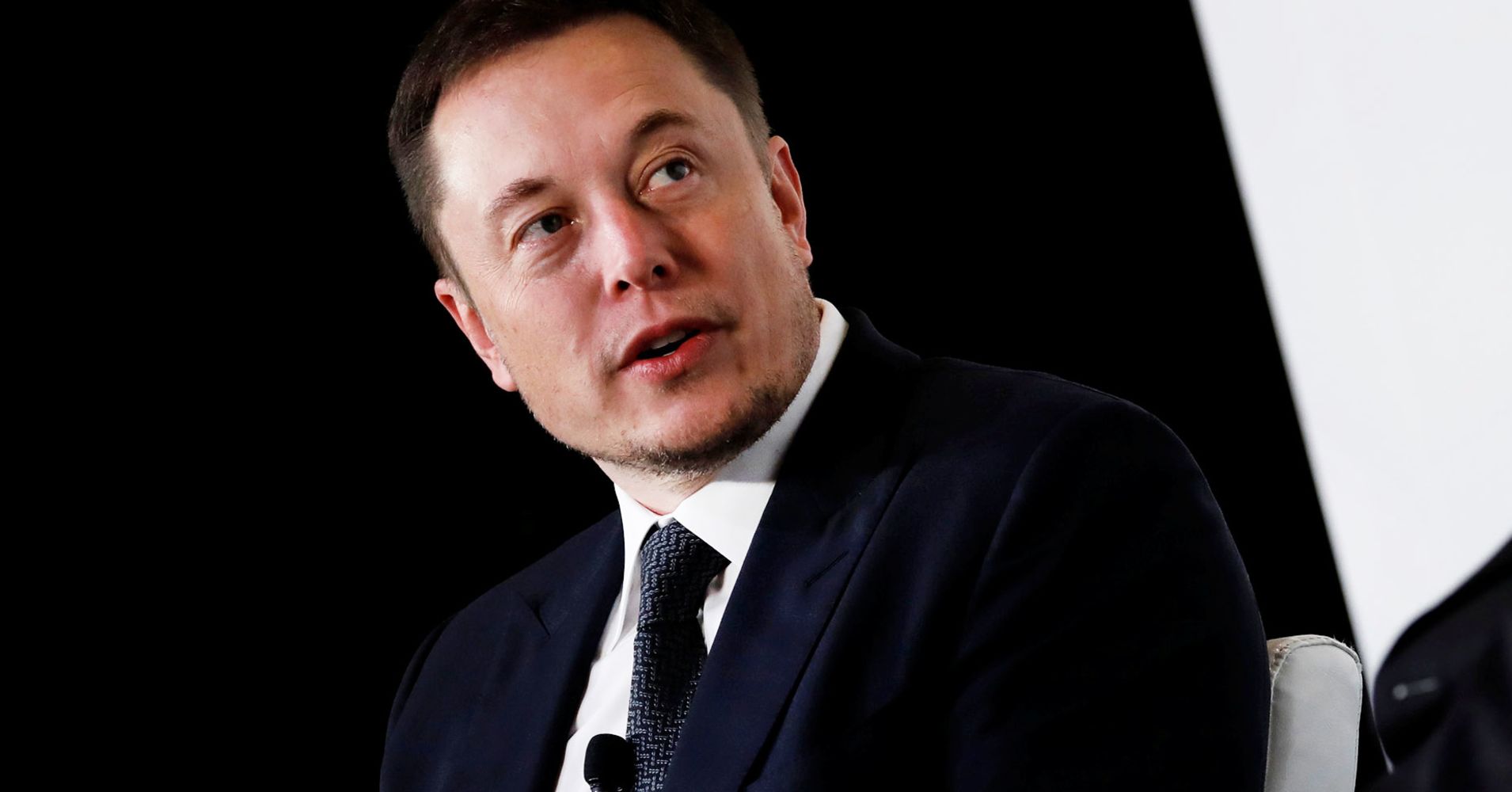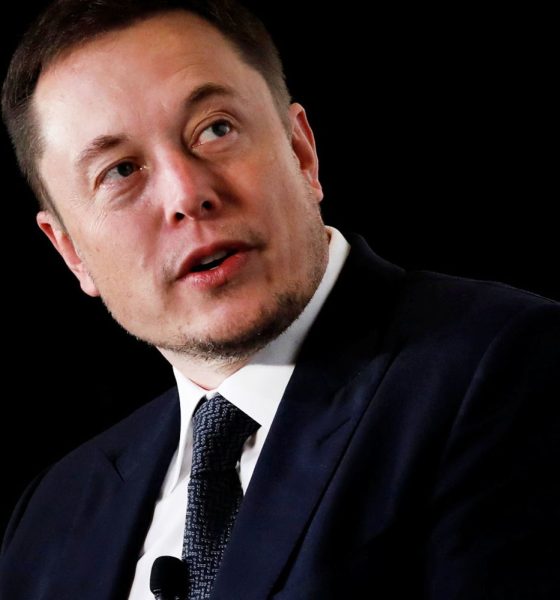

Investor's Corner
Tesla’s Q2 2018 earnings call showed a more mature Elon Musk leading a more mature company
Tesla’s Q2 2018 financial results and earnings call were not only a pleasant surprise because of the encouraging figures in the company’s Update Letter. Contrary to what critics of the company have predicted in the weeks leading up to the Q2 2018 earnings call, the Elon Musk that showed up on Wednesday was not the same person that attended Q1’s now infamous Q&A session.
To say that Elon Musk has courted controversy over the past few months is an understatement. During the company’s Q1 earnings call, Musk lost patience and cut off analysts from Bernstein and RBC Capital Markets, dubbing their questions as “dry,” “boring” and “boneheaded.” The ensuing fallout from Musk’s dismissal of the analysts’ inquiries was significant, with Tesla’s stock taking a steep nosedive. Musk’s actions online became subject to criticism as well, particularly after he was involved in the rescue attempt of a soccer team stranded in a flooded cave network in Thailand. Facing criticism from internet trolls and a rude comment from a cave explorer, Musk snapped back with a retort that was equally uncalled-for. Just like his actions during Tesla’s Q1 earnings call, his Twitter reaction then was negatively reflected in Tesla’s stock.
Elon Musk is at his best when he is calm and calculating and at his worst when he is combative and emotional. While his actions over the past few months on Twitter suggested that he would attend Wednesday’s Q&A session as the latter, his behavior during the Q2 earnings call itself was clearly the former. Musk was restrained, readily admitting his mistakes and directly apologizing for his behavior.
“Yeah, I’d like to apologize for being impolite on the prior call. Obviously, I think there’s no excuse for bad manners, and I was kind of violating my own rule in that regard. I have some excuse; there are reasons for it. I’ve gotten no sleep, and I’ve been working 100, 120-hour weeks, but nonetheless, there’s still no excuse. My apologies for not being polite on the prior call.”
Tesla seemingly made it a point to address questions asked by Toni Sacconaghi from Bernstein and Joseph Spak of RBC Capital Markets, the two analysts who were on the receiving end of Musk’s frustration in the first-quarter earnings call. Musk was polite, humble even, at one point reiterating a direct apology to the RBC Capital Markets analyst.
“I would like to apologize for being impolite on the last call with you. It was not right. I hope you accept my apology,” Musk said.
Apart from Musk’s apology for his errors, Tesla’s Q2 2018 earnings call also featured the CEO sharing the spotlight with members of Tesla’s executive and Autopilot team. As questions were asked, they were addressed by individuals whose expertise corresponded directly to the inquiries. This was quite a departure from Musk’s behavior in Q1’s Q&A session, when he dominated much of the discussion. Targets and timelines mentioned during the call were also realistic, a departure from Musk’s usual bold promises and claims. When Musk was asked about Tesla’s coast-to-coast Autonomous drive, for example, the CEO admitted that the company is currently focusing its attention on releasing Software V9, which would introduce the company’s first Full Self-Driving features.
A look at Tesla’s Q2 2018 Update Letter shows that the electric car and energy company is growing at a rapid rate — and it’s just getting started. With the Model 3 sustaining a 5,000 per week production rate for several weeks in July, Tesla is now looking to raise the electric car’s manufacturing to even greater heights. Tesla plans to ramp the production of the vehicle to 7,000 per week, and steadily improve it from there until it reaches 10,000 Model 3 per week. Overall, Tesla’s potential is vast, but as the company matures into a full-fledged carmaker, Elon Musk must also mature to become a more well-rounded leader.
In an interview with Bloomberg Businessweek last month, Elon Musk promised that he would do better when it comes to responding to the company’s critics and trolls on Twitter. While Musk’s recent tweets — two of which involved a snarky message to Tesla bear Montana Skeptic and hedge fund owner David Einhorn — still showed his tendency to poke fun at his detractors, his actions in the Q2 2018 earnings call shows that he is willing to take a step towards change.
Ultimately, the stock market appears to have appreciated Musk’s change of pace. Tesla stock (NASDAQ:TSLA) popped after hours, at one point rising as high as 10%. As of Thursday’s pre-market, the company’s shares were up 8.06%, trading at $325.10.

Investor's Corner
Tesla stock closes at all-time high on heels of Robotaxi progress

Tesla stock (NASDAQ: TSLA) closed at an all-time high on Tuesday, jumping over 3 percent during the day and finishing at $489.88.
The price beats the previous record close, which was $479.86.
Shares have had a crazy year, dipping more than 40 percent from the start of the year. The stock then started to recover once again around late April, when its price started to climb back up from the low $200 level.
This week, Tesla started to climb toward its highest levels ever, as it was revealed on Sunday that the company was testing driverless Robotaxis in Austin. The spike in value pushed the company’s valuation to $1.63 trillion.
Tesla Robotaxi goes driverless as Musk confirms Safety Monitor removal testing
It is the seventh-most valuable company on the market currently, trailing Nvidia, Apple, Alphabet (Google), Microsoft, Amazon, and Meta.
Shares closed up $14.57 today, up over 3 percent.
The stock has gone through a lot this year, as previously mentioned. Shares tumbled in Q1 due to CEO Elon Musk’s involvement with the Department of Government Efficiency (DOGE), which pulled his attention away from his companies and left a major overhang on their valuations.
However, things started to rebound halfway through the year, and as the government started to phase out the $7,500 tax credit, demand spiked as consumers tried to take advantage of it.
Q3 deliveries were the highest in company history, and Tesla responded to the loss of the tax credit with the launch of the Model 3 and Model Y Standard.
Additionally, analysts have announced high expectations this week for the company on Wall Street as Robotaxi continues to be the focus. With autonomy within Tesla’s sights, things are moving in the direction of Robotaxi being a major catalyst for growth on the Street in the coming year.
Elon Musk
Tesla needs to come through on this one Robotaxi metric, analyst says
“We think the key focus from here will be how fast Tesla can scale driverless operations (including if Tesla’s approach to software/hardware allows it to scale significantly faster than competitors, as the company has argued), and on profitability.”

Tesla needs to come through on this one Robotaxi metric, Mark Delaney of Goldman Sachs says.
Tesla is in the process of rolling out its Robotaxi platform to areas outside of Austin and the California Bay Area. It has plans to launch in five additional cities, including Houston, Dallas, Miami, Las Vegas, and Phoenix.
However, the company’s expansion is not what the focus needs to be, according to Delaney. It’s the speed of deployment.
The analyst said:
“We think the key focus from here will be how fast Tesla can scale driverless operations (including if Tesla’s approach to software/hardware allows it to scale significantly faster than competitors, as the company has argued), and on profitability.”
Profitability will come as the Robotaxi fleet expands. Making that money will be dependent on when Tesla can initiate rides in more areas, giving more customers access to the program.
There are some additional things that the company needs to make happen ahead of the major Robotaxi expansion, one of those things is launching driverless rides in Austin, the first city in which it launched the program.
This week, Tesla started testing driverless Robotaxi rides in Austin, as two different Model Y units were spotted with no occupants, a huge step in the company’s plans for the ride-sharing platform.
Tesla Robotaxi goes driverless as Musk confirms Safety Monitor removal testing
CEO Elon Musk has been hoping to remove Safety Monitors from Robotaxis in Austin for several months, first mentioning the plan to have them out by the end of 2025 in September. He confirmed on Sunday that Tesla had officially removed vehicle occupants and started testing truly unsupervised rides.
Although Safety Monitors in Austin have been sitting in the passenger’s seat, they have still had the ability to override things in case of an emergency. After all, the ultimate goal was safety and avoiding any accidents or injuries.
Goldman Sachs reiterated its ‘Neutral’ rating and its $400 price target. Delaney said, “Tesla is making progress with its autonomous technology,” and recent developments make it evident that this is true.
Investor's Corner
Tesla gets bold Robotaxi prediction from Wall Street firm
Last week, Andrew Percoco took over Tesla analysis for Morgan Stanley from Adam Jonas, who covered the stock for years. Percoco seems to be less optimistic and bullish on Tesla shares, while still being fair and balanced in his analysis.

Tesla (NASDAQ: TSLA) received a bold Robotaxi prediction from Morgan Stanley, which anticipates a dramatic increase in the size of the company’s autonomous ride-hailing suite in the coming years.
Last week, Andrew Percoco took over Tesla analysis for Morgan Stanley from Adam Jonas, who covered the stock for years. Percoco seems to be less optimistic and bullish on Tesla shares, while still being fair and balanced in his analysis.
Percoco dug into the Robotaxi fleet and its expansion in the coming years in his latest note, released on Tuesday. The firm expects Tesla to increase the Robotaxi fleet size to 1,000 vehicles in 2026. However, that’s small-scale compared to what they expect from Tesla in a decade.
Tesla expands Robotaxi app access once again, this time on a global scale
By 2035, Morgan Stanley believes there will be one million Robotaxis on the road across multiple cities, a major jump and a considerable fleet size. We assume this means the fleet of vehicles Tesla will operate internally, and not including passenger-owned vehicles that could be added through software updates.
He also listed three specific catalysts that investors should pay attention to, as these will represent the company being on track to achieve its Robotaxi dreams:
- Opening Robotaxi to the public without a Safety Monitor. Timing is unclear, but it appears that Tesla is getting closer by the day.
- Improvement in safety metrics without the Safety Monitor. Tesla’s ability to improve its safety metrics as it scales miles driven without the Safety Monitor is imperative as it looks to scale in new states and cities in 2026.
- Cybercab start of production, targeted for April 2026. Tesla’s Cybercab is a purpose-built vehicle (no steering wheel or pedals, only two seats) that is expected to be produced through its state-of-the-art unboxed manufacturing process, offering further cost reductions and thus accelerating adoption over time.
Robotaxi stands to be one of Tesla’s most significant revenue contributors, especially as the company plans to continue expanding its ride-hailing service across the world in the coming years.
Its current deployment strategy is controlled and conservative to avoid any drastic and potentially program-ruining incidents.
So far, the program, which is active in Austin and the California Bay Area, has been widely successful.








